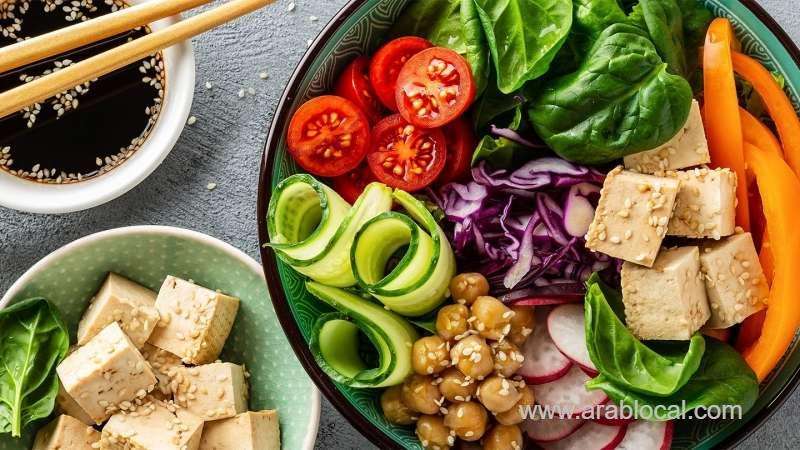Recent studies suggest that vegan and vegetarian diets are associated with a lower risk for cancer and cardiometabolic diseases. It seems that reducing meat consumption and choosing vegetable- and fruit-forward meals are critical components of a healthy diet.
But, can you adopt a vegan diet even with a busy schedule?
Although it is now easier to choose a vegetarian or vegan diet with the variety of available vegan products or vegetarian options, consistent practice can be challenging if you are pressed for time.
Perhaps you’re juggling multiple schedules for your children or multitasking as a professional working toward a promotion. A hectic day or week canovershadow your goal to eat healthier. Spending hours in the kitchen might not be practical and eating out can get expensive.
However, all is not lost.
Committing to a Vegan Diet
You can adopt a vegan diet even when you have a busy schedule. You just need a plan that ensures you stay the course, especially when your day becomes hectic.
Consider the following strategies.
1. Stock up on pantry and refrigerator staples.
Every type of diet has a corresponding list of ingredients that must always be on hand, in the pantry or the refrigerator.
For a vegan diet, your must-have items will typically be found in an organic supermarket.
● Nuts and seeds (e.g., pumpkin seeds, chia seeds, walnuts, etc.)
● Plant-based proteins (e.g., tofu, tempeh, etc.)
● Whole grains (e.g., quinoa, whole wheat pasta, brown rice, etc.)
● Non-dairy milk
● Condiments (e.g., tamari, tahini, mustard, etc.)
● Oil and vinegar (e.g., olive oil, apple cider vinegar, balsamic vinegar, etc.)
● Spices and herbs (e.g., cumin, paprika, fresh basil, etc.)
● Legumes (e.g., peas, edamame, lentils, etc.)
● Fresh produce (e.g., broccoli, bell peppers, sweet potatoes, etc.)
● Vegetable stock
● Tinned tomatoes
● Dried fruits (for easy snacking)
A well-stocked pantry allows you to whip up any plant-based meal. You could make stir fry with tofu, broccoli, and a bit of tamari. With lentils and spices, you could make a protein-packed lentil soup. By having adequate ingredients in stock, you’ll be able to eat healthy every day.
2. Use versatile ingredients.
If you can only have limited ingredients, choose items that can be used in nearly every meal. For example, non-dairy milk can be used in creamy soups, smoothies, and some baked goods.
When planning your meals, incorporate versatile ingredients so you limit prep time between days. Another example would be edamame. It can serve as a protein-rich snack or “beef up” a Japanese-inspired salad. If you happen to have made a big bowl of that salad and want to change it up, grill a flatbread (e.g., pita, lavash, or tortilla) and turn the salad into a wrap.
A vegan diet can be costly given that some ingredients are at premium prices. Choosing ingredients that can pull double or triple duties could help you manage grocery budgets. Alternatively, consider signing up for a grocery store’s loyalty program in the UAE because you’ll get access to top products at affordable prices.
Choose nutrient-dense ingredients.
Nutrient-dense food contains vitamins, minerals, healthy fats, micro- and macro-nutrients. Although no single food contains everything the human body needs, some ingredients pack more nutrition than others.
With just a few key ingredients, your meals will be healthy and delicious. And you do not need to spend too much time prepping them.
Some nutrient-rich ingredients to stock up on are:
● Quinoa - a complete protein, containing all nine essential amino acids the body needs, plus magnesium, iron, and fiber.
● Kale - contains vitamins C, A, K, and B6, copper, magnesium, manganese, potassium, and calcium.
● Berries - loaded with antioxidants, fiber, and vitamin C.
● Avocado - high in monounsaturated fats, vitamins C, E, and K, potassium, and fiber.
● Seaweed - even a bit of sea vegetable products, such as nori, kombu, and wakame, deliver antioxidants, iron, calcium, manganese, iodine, protein, riboflavin, tyrosine, and fiber, among others.
You can also stock up on dark chocolate or cocoa, garlic, and potatoes, which are also rich in nutrients.
Make easy one-pot meals.
Lentil soup (shorbetadas), Lebanese couscous stew (moghrabieh), or red bean chili are easy enough to make because you do not have to fuss over them on the stove. These one-pot meals do require some time to prepare the ingredients, but they’ll cook (or simmer) while you do other things around the house.
One-pot meals also tend to pack a lot more flavor since they’ll have plenty of spices and herbs. They’re also simple to make, letting you create wholesome meals with minimal effort. Best of all, one-pot meals save you from washing too many pots and pans.
Batch cook on weekends.
When you need to get ahead of your meals for the week, batch cook over the weekend. You can freeze the leftovers and reheat for midweek meals.
Batch cooking not only saves you time from making daily meals. It also stops you from choosing junk food when you simply do not have the energy to cook.
Use a mason jar for grab-and-go meals.
Mason jars are perfect for prepping meals you can take with you to work, or wherever. Some recipes to try are overnight oats (if you have to head to the office early), salads, and pasta.
You can make the dish the night before, by layering the ingredients in the jar. Store it in the refrigerator. Then grab and go in the morning.
Overcoming the Challenges to Healthy Eating
Eating healthy can be challenging when you’re in certain situations that limit your options. You might be at a social gathering where only fried food is served, with a simple green salad to break up the richness of the dishes.
In such instances, it may help to pack healthy snacks, like homemade granola or energy balls. Alternatively, you can have a bite to eat before the social event so you avoid eating unhealthy options.
The road to a healthy lifestyle requires some planning and a bit of creativity. When you are well-prepared for the week with nutrient-packed and delicious meals, you will always have something healthy to eat even with a hectic schedule.










